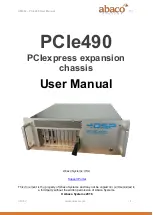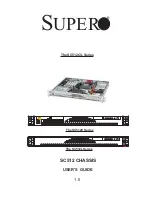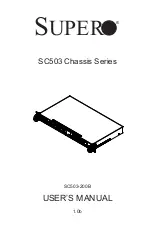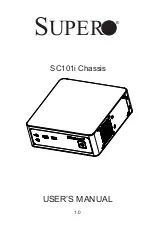
11
Model 6476 User Guide
Style conventions used in this document
Tables contain information of a descriptive nature. For example, pin assignments or signal description.
Cross-references, figure titles, and table titles are hyperlinked. This means that if you have the on-line version of
this document, you can click on the cross-reference and it will “jump” you to that reference within the document.
This feature only works with references to sections/tables/figures within this document. References to other docu-
ments (for example,
PICMG 2.5 R1.0 CompactPCI Computer Telephony Specification
) are not hyperlinked.
The symbols “/” and “#” indicate signals that are active low.
Specific safety-related terms, traceable to certain safety regulatory agency requirements (i.e., IEC950 and har-
monized derivative specifications) are used within this manual. Refer to the referenced document for a defini-
tion of these terms.
Typographical conventions used in this document
This section describes the typographical conventions and terms used in this guide.
Mains Voltage: Do not open the case when the power cord is attached. Dis-
connect the power supply cord before servicing. For systems without a power
switch, line voltages are present within the power supply when the power
cords are connected. The mains outlet that is utilized to power the devise shall
be within 10 feet (3 meters) of the device, shall be easily accessible, and pro-
tected by a circuit breaker.
For AC powered units, ensure that the power cable used with this device
meets all applicable standards for the country in which it is to be installed,
and that it is connected to a wall outlet which has earth ground.
Hazardous network voltages are present in WAN ports regardless of whether
power to the Smart-DTA is ON or OFF. To avoid electric shock, use caution
when near WAN ports. When detaching cables, detach the end away from the
ForeFront device first.
Do not work on the system or connect or disconnect cables during periods of
lightning activity.
In accordance with the requirements of council directive 2002/
96/EC on Waste of Electrical and Electronic Equipment (WEEE),
ensure that at end-of-life you separate this product from other
waste and scrap and deliver to the WEEE collection system in
your country for recycling.






































